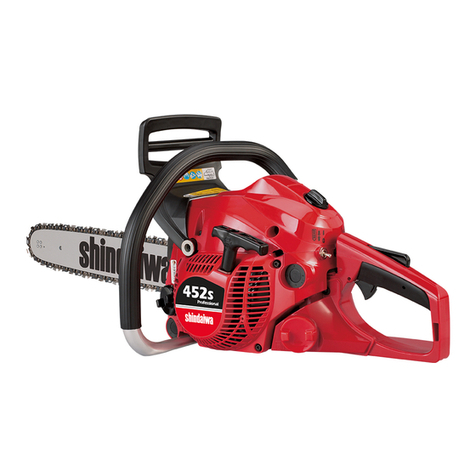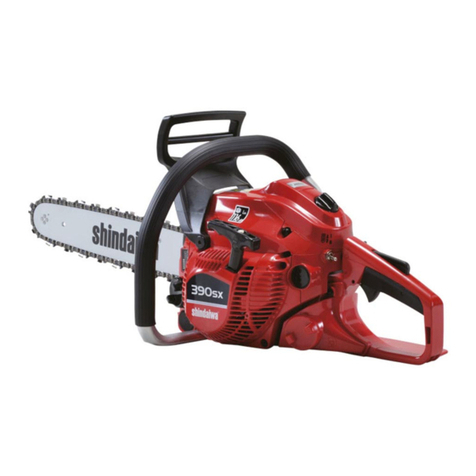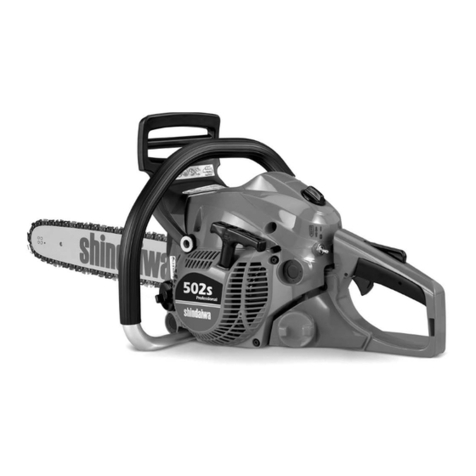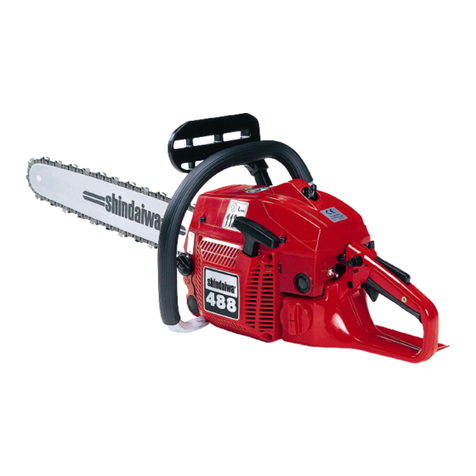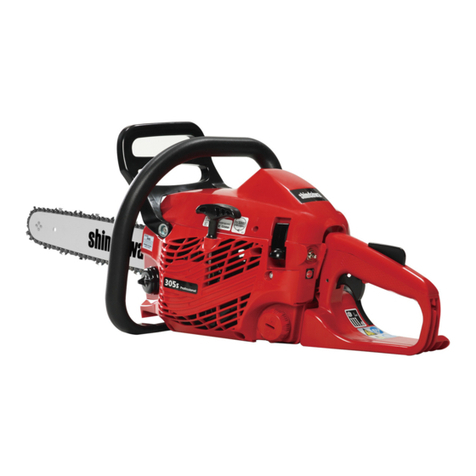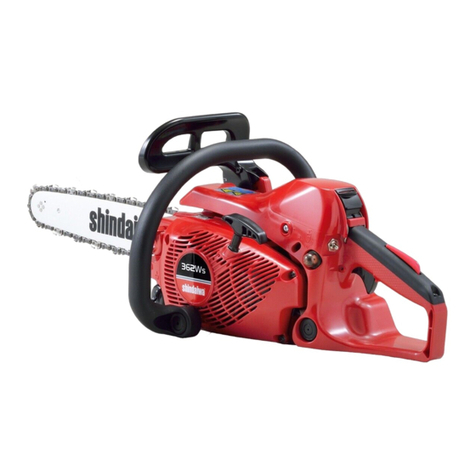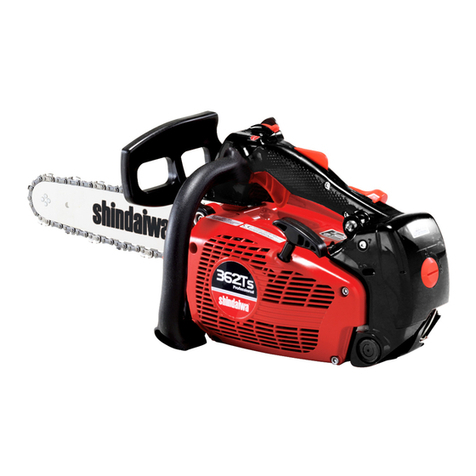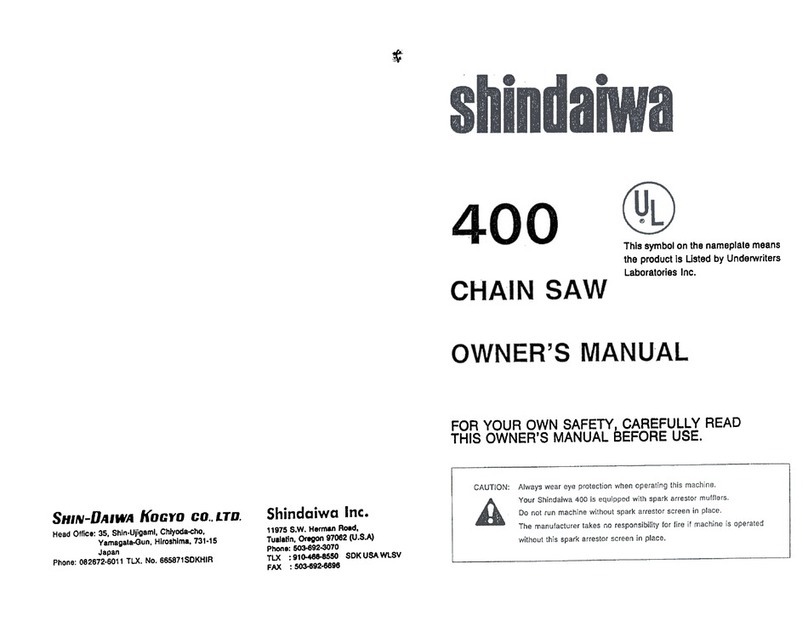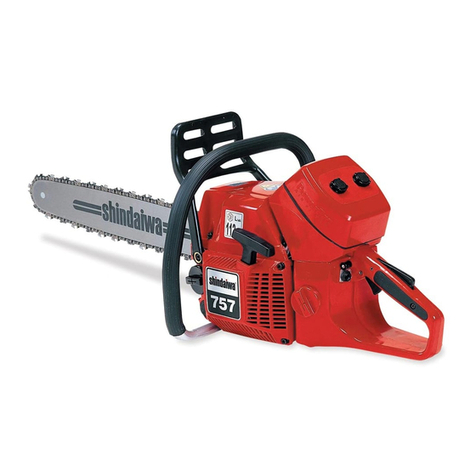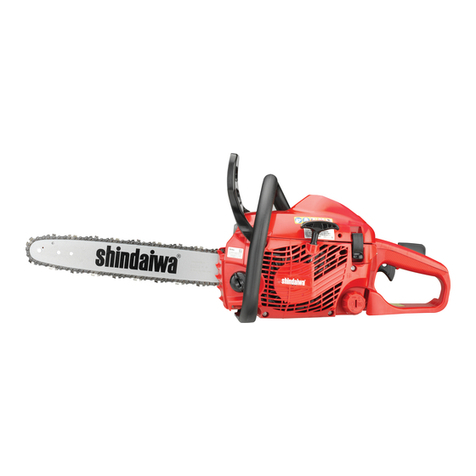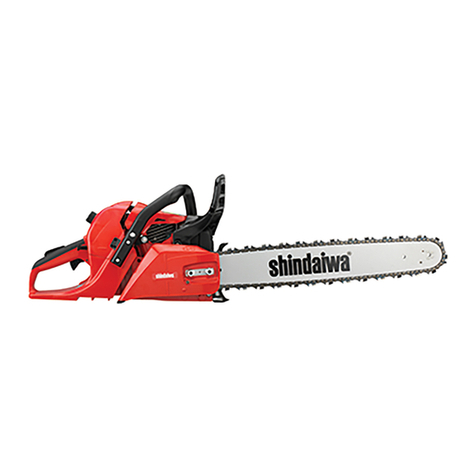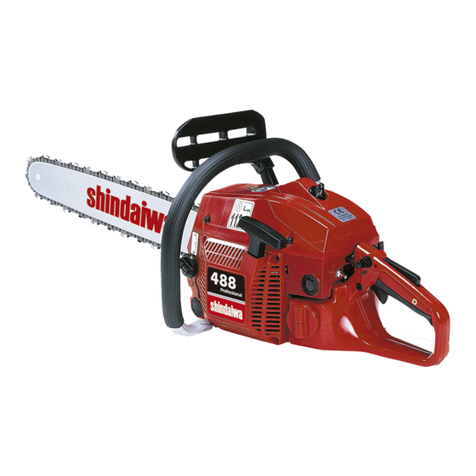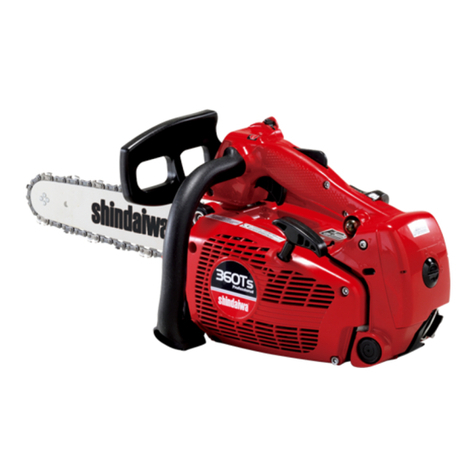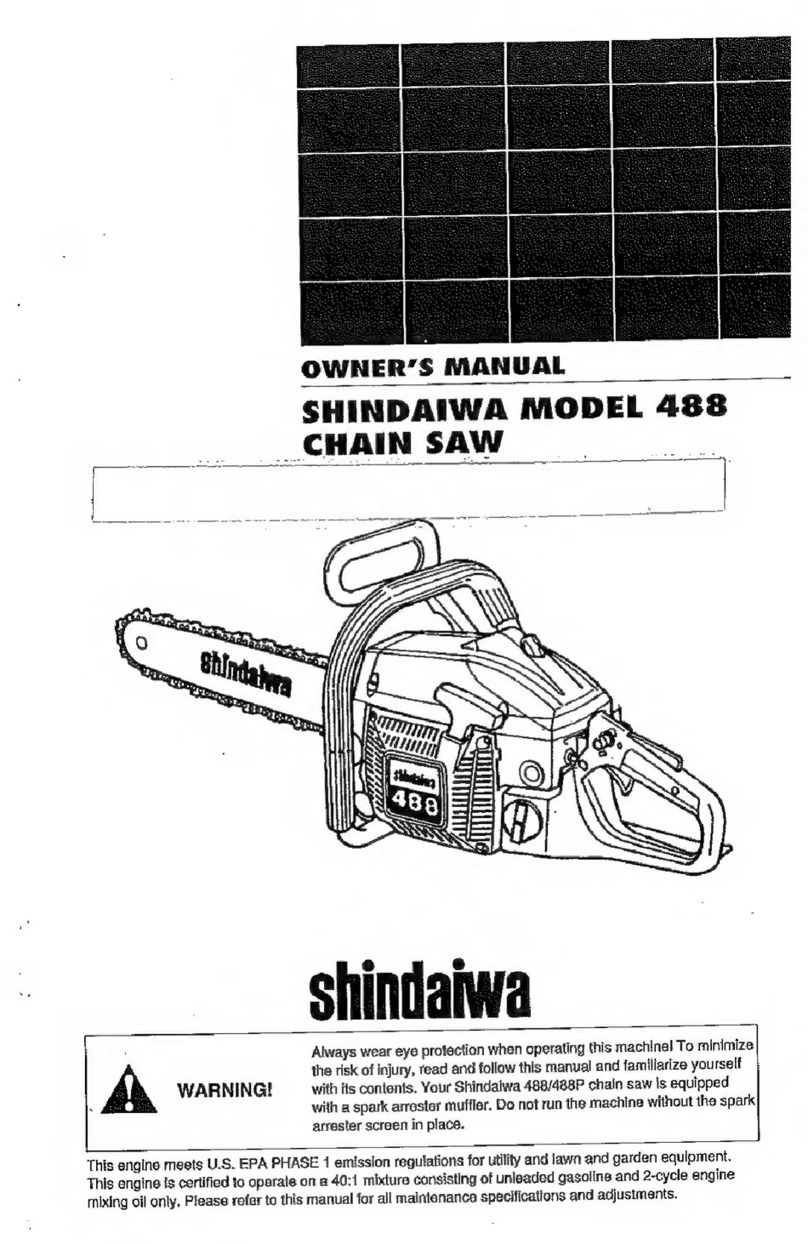
4
In order to allow the saw to be held with both
hands, as a general rule operators should aim
for a secure work position in which they
operate the saw at
■Hip level, when cutting horizontal sections,
and
■Solar plexus level, when cutting vertical
sections.
Where the operator is working close into
vertical stems with low lateral forces on the
work position, then a good footing could be
all that is needed to maintain a secure work
position.
However, as operators move away from the
stem, they will need to take steps to remove
or counteract the increasing lateral forces by,
for example, a redirect of the main line via a
supplementary anchor point or using an
adjustable strap direct from the harness to a
supplementary anchor point.
*aining a good footing at the working position
can be assisted by the use of a temporary foot
stirrup created from an endless sling.
When starting the saw in the tree, the operator
should
a) Apply the chain brake before starting,
b) Hold the saw on either the left or right of
the body when starting,
1) On the left side, hold the saw with the left
hand on the front handle and thrust the saw
away from the body while holding the pull
starter cord in the right hand, or
2) On the right side, hold the saw with the
right hand on either handle and thrust the
saw away from the body while holding the
pull starter cord in the left hand.
The chain brake should always be engaged
before lowering a running saw onto its strap.
Operators should always check that the saw
has suf¿cient fuel before undertaking critical
cuts.
Operators should not use tree service chain-
saws one-handed when work position is
unstable or in preference to a handsaw when
cutting small diameter wood at the branch tips.
Tree service chain-saws should only be used
one-handed where
■Operators cannot gain a work position
enabling two-handed use, and
■They need to support their working
position with one hand, and
■The saw is being used at full stretch, at
right angles to and out of line with the
operator’s body.
Operators should never
■Cut with the kickback zone at the tip of the
chain-saw guide bar,
■“Hold and cut” sections, or
■Attempt to catch falling sections.
It the saw become trapped during cutting,
operators should
■Switch off the saw and attach it securely to
the tree inboard (i.e. towards the trunk side)
of the cut or to a separate tool line,
1. Securing the Work Position for Two-handed Use
2. Starting the Saw in the Tree
4. Freeing a Trapped Saw
3. One-hand Use of the Chain-saw
■Pull the saw from the kerf whilst lifting the
branch as necessary,
■If necessary, use a handsaw or second chain
saw to release the trapped saw by cutting a
minimum of 30 cm away from the trapped
saw.
Whether a handsaw or a chain-saw is used
to free a trapped saw, the release cuts should
always be outboard (toward the tips of the
branch), in order to prevent the saw being
taken with the section and further
complicating the situation.
An analysis of accidents with these saws
during tree service operations shows the
primary cause as being inappropriate one-
handed use of the saw.
In the vast majority of accidents, operators fail
to adopt a secure work position that allows
them to hold both handles of the saw.
This results in an increased risk of injury due
to
■Not having a ¿rm grip on the saw if it kicks
back,
■A lack of control of the saw such that it
is more likely to come into contact with
climbing lines and the operator’s body
(particularly the left hand and arm), and
■Loss of control owing to an insecure work
position and resulting in contact with the
saw (unexpected movement during
operation of the saw).
Using the Chain-saw in the Tree
